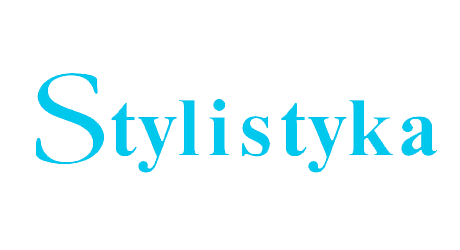Barker C. H., 2005, Studia kulturowe. Teoria i praktyka, tłum. A. Sadza, Kraków: Wydawnictwo Uniwersytetu Jagiellońskiego.
Google Scholar
Bartmiński J., 1998, Tekst jako przedmiot tekstologii lingwistycznej. – Tekst – problemy teoretyczne, red. J. Bartmiński, B. Boniecka, Lublin: Wydawnictwo Uniwersytetu Marii Curie-Skłodowskiej, s. 9–25.
Google Scholar
Danek D., 1980, Dzieło literackie jako książka. O tytułach i spisach rzeczy w powieści, Warszawa: Państwowe Wydawnictwo Naukowe.
Google Scholar
Duszak A., 1998, Tekst, dyskurs, komunikacja międzykulturowa, Warszawa: Państwowe Wydawnictwo Naukowe.
Google Scholar
Fiske J., 2010, Zrozumieć kulturę popularną, tłum. K. Sawicka, Kraków: Wydawnictwo Uniwersytetu Jagiellońskiego.
Google Scholar
Fulińska A., Janicki J. T., 2002, Wstęp do analizy strukturalnej gier fabularnych, „Teksty Drugie”, z. 6, s. 150–157.
Google Scholar
Genette G., 1992, Palimpsesty, tłum. A. Milecki. – Współczesna teoria badań literackich za granicą, t. IV, red. H. Markiewicz, Kraków: Wydawnictwo Literackie.
Google Scholar
Genette G., 1997, Paratexts: Thresholds of Interpretation, tłum. J. E. Lewin, Cambridge–New York: Cambridge University Press, https://www.almendron.com › uploads › 2017/0 (dostęp: czerwiec 2022).
Google Scholar
Gray J., 2010, Show Sold Separately: Promos, Spoilers, and Other Media Paratexts, New York: New York University Press, https://paas.org.pl › uploads › 2012/12 › 02 (dostęp: czerwiec 2022).
Google Scholar
Gwóźdź A., 2010, Obok filmu, między mediami. – Pogranicza audiowizualności, red. A. Gwóźdź, Kraków: Universitas.
Google Scholar
Jambor J., 2018, Paratextualita – predovšetkým zdroj otázok bez odpovedí? Aktuálne otázky výskumu paratextov, „Philologia. Časopis Ústavu filologických štúdií Pedagogickej fakulty Univerzity Komenského v Bratislave”, vol. XXVIII, n° 1, s. 77–87.
Google Scholar
Kubiński P., 2016, Gry wideo. Zarys poetyki, Kraków: Universitas. Le Guin K. U., 1996, Wracać wciąż do domu, tłum. B. Kopeć-Umiastowska, J. Wołyńska, M. Mazur, Warszawa: Wydawnictwo Prószyński i S-ka.
Google Scholar
Lis-Wielgosz I., 2017, Przekład omówiony, czyli o statusie i funkcji paratekstu (na przykładzie serii Biblioteka Duchowości Europejskiej), „Przekłady Literatu Słowiańskich”, t. 8, cz. 1, s. 37–56.
Google Scholar
Loewe I., 2004a, Parateksty, pre-teksty czy możliwe paragatunki? – Gatunki mowy i ich ewolucja, t. 2: Gatunek a tekst, red. D. Ostaszewska, Katowice: Wydawnictwo Uniwersytetu Śląskiego, s. 180–188.
Google Scholar
Loewe I., 2004b, Paratekstualność i wielostylowość noty redakcyjnej. – Wielojęzyczność w perspektywie stylistyki i pragmatyki, red. M. Ruszkowski, Kielce: Wydawnictwo Akademii Świętokrzyskiej, s. 153–174.
Google Scholar
Loewe I., 2007, Gatunki paratekstowe w komunikacji medialnej, Katowice: Wydawnictwo Uniwersytetu Śląskiego.
Google Scholar
Loewe I., 2012, O dialogu z widzem w polskiej neotelewizji publicznej: paratekst jako składnik strumienia telewizyjnego. – Język w mediach: antologia, red. M. Kita, I. Loewe, Katowice: Wydawnictwo Uniwersytetu Śląskiego, s. 238–253.
Google Scholar
Loewe I., 2015a, Paratexts in Television, Part 1, tłum. z języka polskiego R. Wylecioł, „Medialingwistyka XXI wiek” („Media Linguistic”), nr 2, s. 69–77.
Google Scholar
Loewe I., 2015b, Paratexts in Television, Part 2, tłum. z języka polskiego R. Wylecioł, „Medialingwistyka XXI wiek” („Media Linguistic”), nr 3, s. 75–84.
Google Scholar
Oziewicz M., 2013, Speculative Fiction, http://oxfordre.com/literature/view/10.1093/acrefore/9780190201098.001.0001/acrefore-9780190201098-e-78 (dostęp: 01.03.2022).
Google Scholar
Piekarczyk D., 2020, Paratekstowe strategie zachęcania czytelnika do lektury tekstów popularnonaukowych, „Poradnik Językowy”, nr 7, s. 7–20.
DOI: https://doi.org/10.33896/PorJ.2020.7.1
Google Scholar
Piętkowa R., 2001, Paratekst w tekstach naukowych – informacja i/lub reklama. –Stylistyka a pragmatyka, red. B. Witosz, Katowice: Wydawnictwo Uniwersytetu Śląskiego, s. 201–211.
Google Scholar
Piętkowa R., 2004a, Paratekst o autorze. Biogram i/czy prezentacja? – Gatunki mowy i ich ewolucja, t. II: Tekst a gatunek, red. D. Ostaszewska, Katowice: Wydawnictwo Uniwersytetu Śląskiego, s. 230–245.
Google Scholar
Piętkowa R., 2004b, Paratekstualność w dyskursie naukowym. – Wielojęzyczność w perspektywie stylistyki i poetyki, red. M. Ruszkowski, Kielce: Wydawnictwo Akademii Świętokrzyskiej, s. 119–134.
Google Scholar
Piętkowa R., 2007, Gatunki paratekstualne wobec prototypu stylu naukowego. – Gatunki mowy i ich ewolucje, t. III: Gatunek a odmiany funkcjonalne, red. D. Ostaszewska, Katowice: Wydawnictwo Uniwersytetu Śląskiego, s. 143–159.
Google Scholar
Skowronek B., 2013, Mediolingwistyka. Wprowadzenie, Kraków: Wydawnictwo Naukowe Uniwersytetu Pedagogicznego.
Google Scholar
Stanitzek G., 2005, Text and Paratexts in Media, transl. E. Klein, „Critical Inquiry”, No. 32 (1), s. 27–42.
DOI: https://doi.org/10.1086/498002
Google Scholar
Szajnert D., 1995, Poetyka autokomentarza. – Poetyka bez granic, red. W. Bolecki, W. Tomasik, Warszawa: Instytut Badań Literackich Polskiej Akademii Nauk, s. 149–161.
Google Scholar
Szajnert D., 2000, Osoba w paratekstach. – Osoba w literaturze i komunikacji literackiej, red. E. Balcerzan, W. Bolecki, Warszawa: Księgarnia Akademicka, s. 47–72.
Google Scholar
Szajnert D., 2011, Intencja autora i interpretacja – między inwencją a atencją. Teksty i parateksty, Łódź: Wydawnictwo Uniwersytetu Łódzkiego.
DOI: https://doi.org/10.18778/7525-607-9
Google Scholar
Szeja J. Z., 2004, Gry fabularne. Nowe zjawisko kultury współczesnej, Kraków: Wydawnictwo RABID.
Google Scholar
Tokarz B., 2017, Parateksty jako wyraz koncepcji przekładu, „Przekłady Literatur Słowiańskich”, t. 8, cz. 1, s. 15–35.
Google Scholar
Uździcka M., 2017, O nowym pojęciu glosariusza (na materiale literatury fantasy). Rekonesans badawczy, „Stylistyka”, t. XXVI: Słowo a styl, s. 269–290, https://doi.org/10.25167/Stylistyka26.2017.17.
DOI: https://doi.org/10.25167/Stylistyka26.2017.17
Google Scholar
Uździcka M., 2019, Podręcznik do gier fabularnych jako paratekst, „Књижевна историја”, nr 51 (168), s. 179–197, https://doi.org/10.18485/kis.2019.51.168.10.
DOI: https://doi.org/10.18485/kis.2019.51.168.10
Google Scholar
Uździcka M., 2021, Paratekst w literaturze fantasy (na podstawie glosariusza), „Literatura i Kultura Popularna”, t. XXVI, s. 151–168, https://doi.org/10.19195/0867-7441.26.12.
DOI: https://doi.org/10.19195/0867-7441.26.12
Google Scholar
Walczak B., 2007, Iwona Loewe, Gatunki paratekstowe w komunikacji medialnej, „Poznańskie Studia Polonistyczne. Seria Językoznawcza”, t. XV (XXXV), s. 275–278.
Google Scholar
Wolf W., 2001, Paratext. – Lexikon Literatur- und Kulturtheorie. Ansätze – Personen– Grundbegriffe, Stuttgart–Weimar: Metzler, s. 491–492.
Google Scholar
Wojtak M., 2004, Gatunki prasowe, Lublin: Wydawnictwo Uniwersytetu Marii Curie--Skłodowskiej.
Google Scholar
Wojtak M., 2014, Genologiczna analiza tekstu, „Prace Językoznawcze UWM”, z. VI/3, s. 63–71.
DOI: https://doi.org/10.18290/rh.2015.63.6-13
Google Scholar
Wojtak M., 2019, Wprowadzenie do genologii, Lublin: Wydawnictwo Uniwersytetu Marii Curie-Skłodowskiej.
Google Scholar


 https://doi.org/10.25167/Stylistyka32.2023.17
https://doi.org/10.25167/Stylistyka32.2023.17
